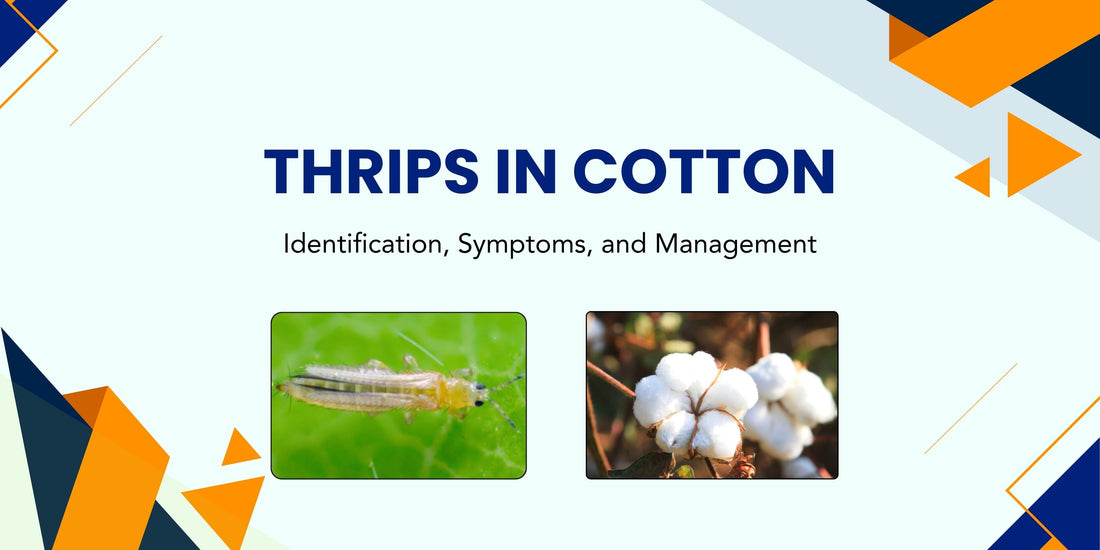
THRIPS IN COTTON
Telugu name: Thamara purugu
Scientific name: Thrips tabaci
Identification of the Pest:
- Destructive stage: Nymphs and adults.
- Eggs: Minute, kidney shaped laid in slits in leaf tissues. Egg period: 5 days.
- Nymphs: Very minute, slender, yellowish and microscopic.
- Adult: Small, slender, yellowish to brown with fringed wings.
Lifecycle:
1. Egg Stage:
- Female thrips lay eggs inside plant tissues, usually in leaves, buds, or flowers.
- Eggs are tiny and not visible to the naked eye.
- They hatch within 2-5 days.
2. Larval Stage:
- Tiny, wingless larvae emerge and begin feeding on the plant.
- They are yellowish or light in color and feed on leaves and other tender parts..
- This stage lasts 5-7 days.
3. Pupal Stage:
- Mature larvae drop to the soil to pupate.
- During this stage, they do not feed.
- This stage lasts 2-4 days.
4. Adult Stage:
- Adults emerge with slender bodies and fringed wings.
- Adult thrips live for 20-30 days, during which they feed nd reproduce.
- Adult females can lay 50-100 eggs in their lifetime.
- Under favorable conditions, entire life cycle completes in 12-15 days.
Symptoms:
- Leaf laceration under the under surface of leaves.
- Silvery or brown necrotic spots of 3-5 mm.
- Leaf wrinkling and upward curling.
- Distorted leaves with white shiny patches.
Favourable conditions:
- Thrips grow well in warm temperatures ranging from 25-30°C.
- They prefer low to moderate humidity levels,typically below 70%
- Dry weather promotes thrips activity and population growth.
- They are more active during hot and dry periods.
- Thrips prefer young and tender plant parts, such as newly emerged leaves and buds.
- Rain can wash away thrips, so they prefer areas with less rainfall during their active period.
ETL: 50 Nymphs or adults/ 50 leaves.
Management:
Cultural practices:
- Avoid overcrowding by maintaining proper spacing to ensure good air circulation, which reduces thrip infestation.
- Sow cotton early to avoid peak thrip activity.
- Remove weeds around the field, as they can serve as alternate hosts for thrips.
- Regular irrigation reduces thrip populations by discouraging their breeding in dry conditions.
- Follow Crop rotation,Alternate cotton with non-host crops to break the pest cycle.
- Grow crops like sorghum or maize as a barrier to reduce thrip infestation.
Biological control:
-
Predatory insects: Lacewings (Chrysoperla) and ladybird beetles feed on thrips.
-
Parasitic wasps: Tiny wasps like Thripobius spp. parasitize thrips and control their population.
-
Sprays of entomopathogenic fungi like Beauveria bassiana or Verticillium.
Chemical control:
- Use systemic insecticides like Imidacloprid during the early stages of infestation.
- Use contact insecticides like Spinosad for severe infestation.
- Rotate chemicals with different modes of action to avoid thrips resistance.
- Excessive chemical use can harm beneficial insects and lead to resistance.
For Effective control of Thrips use Biopesticide “Dr.ELIMINATOR”@250 ml/acre.
